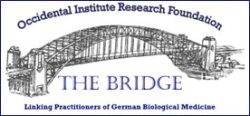How Alkalinizing Agents Can
Reduce the Risk of Cancer
Over the last few years there has been much scholarly discussion about the efficacy of alkalinizing agents in the treatment of cancer. It is widely understood that cancer thrives in an acidic environment and that by making the metabolic terrain more alkaline, it is possible to reduce the incidence of cancer metastasis. Dr. Tullio Simoncini, an Italian oncologist, for example, has become known for his treatments of certain forms of cancer by altering the pH levels of the terrain from acidic to alkaline.
He believes that since cancer is characterized by an acidic nature, the use of alkalinizing agents such as sodium bicarbonate may have the potential to alter the terrain where cancer is manifested to minimize or even eradicate its impact on the body. This paper will evaluate Dr. Simoncini’s protocols and claims and whether alkalinizing agents such as sodium bicarbonate can effectively alter the terrain of the cancer-infected region.
We must state that Dr. Simoncini’s research is not universally embraced by the academic community due to the large volume of clinical trials required for verification. This does not invalidate his successes and results.
In exploring the role that alkaline levels play in combating cancer, we find that the accumulated evidence is mixed. Some research suggests that alkalinizing agents such as sodium bicarbonate play a key role in combating cancer whereas other studies suggest that it does not play a constructive role. Overall observations conclude that alkalinizing agents appear beneficial, but not unreservedly so.
A study by Anderson et al (2008) offers a somewhat counter-intuitive assessment of alkalinity and what it means in terms of fighting cancer. The study states that “regions of increased alkalinity may provide a proliferative advantage for cancer stem or other cells, as more alkaline intra- and extra-cellular environments often are associated with increased cellular proliferation; if increased alkalinity is present in aerobic, but perhaps more especially in hypoxic micro-environments, proliferation of cells less susceptible to programmed cell death, with reduced expression of multi-drug resistance membrane proteins an altered efficacy of some therapeutic drugs should develop” (Anderson et al, 2008, p.1193).
The Anderson team writes that cells found in the hypoxic micro-environments may well prove to be, thanks to more alkaline intra- and extra-cellular environments, capable of generating “aberrant clones resistant to additional therapy, particularly those dependent upon mitochondrial oxidative processes with greater generation of free radicals….The interplay between alkalinity and normoxia, hypoxia and anoxia may differentially advantage some cancer “stem cells” (Anderson et al, 2008, p.1193).
Reducing the acidity level in the terrain around cancer cells has some validity. For example, Sartori (1984) notes that certain alkali metals – rubidium and cesium, for instance – are chemo-therapeutic agents. Sartori (1984) suggests that: “the ‘high pH’ therapy resides in changing the acidic pH range of the cancer cell by cesium towards weak alkalinity in which the survival of the cancer cell is endangered, and the formation of acidic and toxic materials, normally formed in cancer cells, is neutralized and eliminated” (Sartori, 1984, p.7).
Shibata et al (1992) studied the effect of alkalizers and acidifiers on bladder cell proliferation and two-stage carcinogenesis. The overall findings were significant: “although elevation in urinary Na+ or K+ may be an essential factor for promotion of rat bladder carcinogenesis, the action of these (agents) may depend strongly on urinary alkalinity” (Shibata, 1992, p.821).
Accumulated evidence appears to indicate a marked correlation between alkalinity and the successful combat of cancer and furthermore, it appears that alkalinity levels thwart the capacity of (some) other agents in promoting carcinogenesis. At the Centre for Biological Medicine we have been using alkanalizing agents for over ten years to combat hyperacidosis without incident and particularly value its efficacy in restoring immune system function as the cells of the immune system are highly sensitive to extracellular pH levels. Our patients test their acidity levels at least twice per week with the first morning urine because when levels are an ideal 6.8 at this time of day, we can be assured that levels will remain stable throughout the day.
It is pertinent to mention that some of the side-effects associated with radiation treatment of cancer – radiation-induced oral mucositis in patients with head and neck cancer – can be overcome with a sodium bicarbonate rinse aimed at reducing the amount of oral microbial flora (Shih et al., 2002). This is more of a quality of life matter than an existential matter, but demonstrates how alkalinizing agents have many varied ways of helping individuals overcome the complications associated with cancer.
Other successful applications of alkalizing agents include Dr. Anne Lardner (Lardner, 2001) who observed that NK (natural killer) cells exhibited compromised cytotoxicity under acidic conditions. NK cells are important in identifying and eliminating virally infected cells and cancer cells and high NK cell numbers are associated with fewer diseases in the elderly and play an important role in healthy aging (Solana 2000).
As well, oral supplementation with sodium bicarbonate has been used for many years to enhance recovery from intense exercise and has been shown to improve athletic performance in elite athletes (Lindh 2008).
Dr. Simoncini (Simoncini 2008) has successfully demonstrated tumour regression using intravenous sodium bicarbonate and has developed several different protocols for various cancers. His breast cancer protocol involves site injection around the lump of 5% sodium bicarbonate 70-100 ml every day for six days. The treatment is followed by an IV administration of 500 ml sodium bicarbonate 5% for 6 days on 6 days off for 4 cycles. His lung cancer protocol involves an IV application of 500 ml sodium bicarbonate 5% 6 days on 6 days off for 4 cycles followed by a CAT scan. A two week waiting period is observed then protocol is repeated. In the case of bronchial adenocarcinoma, 1 teaspoon of sodium bicarbonate is added to ½ litre water and inhaled with an inhaler for thirty minutes. Six days on six days off are advised during the IV break. His protocol for prostate cancer involves locating a port cath in the axillary cavity from where a catheter reaches the prostate artery. 400-500 ml 5% sodium bicarbonate is administered every day, 6 days on 6 days off for 4 cycles followed by a Cat Scan or MRI. There is a ten day break then the cycle is repeated for 6 days on 10 days off. In each of the protocols the only side effects reported are bruising, tiredness and thirst. He advises patients to drink lots of water supplemented with salts and sugars with dietary supplements of potassium and magnesium.
Regarding his lung cancer protocol he states “In general, this neoplasia responds very well to the therapy with sodium bicarbonate five per cent solution, which is implemented through arteriographic transcardial catheter positioned in the pertinent pulmonary artery. This allows the administration of the optimal doses against the mass or masses. An eight to nine day cycle is sufficient to cause the regression of the disease. However, when the mass is present in the bronchial lumen as well, it is appropriate to program a cycle of at least 4 to 5 bronchoscopies through which it is possible to percolate in the bronchial airway 30-50 cm3 of bicarbonate solution to be left in the location. After the first treatment it is already possible to notice a reduction of the bronchial stinosis and edema with evident improvement in symptoms. Aside from possible generic symptoms related to the administration of bicarbonate, the therapy is always well-tolerated and presents no problem except when the hyper-alkaline environment caused by the infusions favors the development of bacteria which demands immediate treatment with antibiotics. This applies especially in heavily debilitated patients. Anti-tumor therapies that are specific to each anatomical area must be applied when the pleura or other organs are involved.”
In North America, sodium bicarbonate drips have been widely used prior to the infusion of essential nutrients to improve the efficacy of absorption. Improvements have been noted after three successive treatments.
Overall, it is safe to say that alkalinizing agents such as sodium bicarbonate appear to play some role in thwarting cancer, but evidence is not conclusive in all types of cancers but certainly warrants further research.
 An Exclusive Article for Members
An Exclusive Article for Members
From THE BRIDGE Newsletter of OIRF
Published June 2009
© Copyright 2009, Dr. Karim Dhanani, ON Canada
Bibliography
- Anderson, K.M., Jajeh, A., Guinan, P., Tsui, P., & Rubenstein, M. (2008). Do intra-tumor alkaline micro-regions represent additional therapeutically privileged sites? Medical Hypotheses, 70(6): 1193-1196.
- Cui, L., Shi, Y., Dai, G., Pan, H., Chen, J., Song, L., Wang, S., Chang, H.C., & Wang, Xinru. (2006). Modification of N-methyl-N-Nitrosourea initiated bladder carcinogenesis in Wistar rats by terephthalic acid. Toxicology & Applied Pharmacology, 210(1/2): 24-31.
- Lardner, Anne, Department of Biological Sciences, Dublin Institute of Technology, Ireland. “The effects of extracellular pH on immune function”, Leukocyte Biology. 2001;69:522-530.)
- Lindh, AM et al. Sodium bicarbonate improves swimming performance. International Journal of Sports Medicine, 07/2008; 29(6):519-23.
- Sartori, H.E. (1984). Nutrients and cancer: an introduction to cesium therapy. PHarmacology, Biochemistry, and Behavior, 21(suppl.1): 7-10.
- Shibata, M.A., Tamano, S., Shirai, T., Kawabe, M., & Fukushima, S.(1992). Inorganic alkalizers and acidifiers under conditions of high urinary sodium or potassium on cell proliferation and two-stage carcinogenesis in the rat bladder. Japanese Journal of Cancer Research, 83(8): 821-829.
- Shih, A., Miaskowksi, C., Dodd, M.J., Stotts, N.A., & MacPHail, L. (2002). A research review of the current treatments for radiation-induced oral mucositis in patients with head and neck cancer. Oncology Nursing Forum, 29(7): 1063-1080.
- Simoncini, T. (http://www.curenaturalicancro.com/treatment-simoncini-protocol.html); http://www.curenaturalicancro.com/
- Solana R and Mariani E. NK and NK/T cells in human senescence. Vaccine 2000, 18: 1613-1620, 2000



